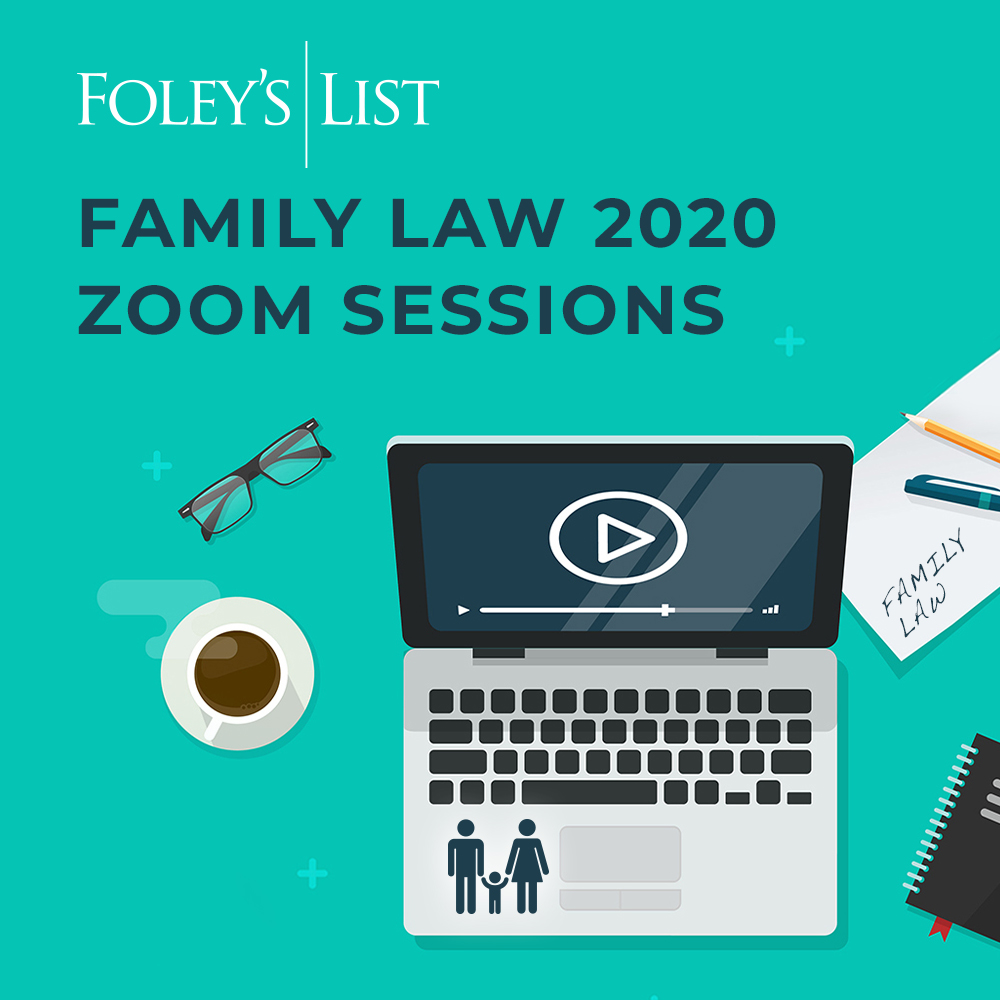Jacky Campbell and I recorded an hour-long fireside chat for TEN about the proposed amendments to the Family Law Act 1975. Check it out below.
Category: Family Law Fundamentals
On 6 October 2021, I presented a CPD session for the Family Law Bar Association, together with Senior Judicial Registrar Parker of the Federal Circuit and Family Court of Australia and Dr Robin Smith of the Victorian Bar, about recent changes to Australia’s family law system.
I shared a few thoughts about the harmonised Family Law Rules. Whilst I did not write a paper per se, I thought that some practitioners may find utility in the notes I used for my presentation, a copy of which you may download, or view below.
A recording of the entire session is available to members of the Victorian Bar on the CPD section of the Bar website, and to others by subscription to CPD In Session.

As part of the Foley’s List Family law 2020 Zoom Sessions, Emma Swart and I presented about a range of ways in which family law final property orders might not be so final after all. You can watch the presentation here.
Update: our presentation was also included in season 2 of the Think Foley’s Podcast. You can listen to the episode here.
The Family Court of Australia and Federal Circuit Court of Australia have today issued Joint Practice Direction 1 of 2020, which sets out the “Core Principles in the Case Management of Family Law Matters”.
In essence, nothing in it is new. It repeats, and highlights, certain principles in the Family Law Act 1975, Family Law Rules 2004 and Federal Circuit Court Rules 2001.
However, it does suggest that the Courts will be taking some of these principles more seriously than they have been, including costs consequences (including against legal practitioners) where there is non-compliance.
Is this the first real step towards a firmer approach to poor conduct in our jurisdiction, edging towards some of the concepts found in legislation such as the Civil Procedure Act 2010 (Vic)?
 On 4 May 2017, Debra Cherrie and I presented to a group of around 35 lawyers at Arnold Bloch Leibler on the fundamentals of family law financial matters, and how family law intersects with commercial law.
On 4 May 2017, Debra Cherrie and I presented to a group of around 35 lawyers at Arnold Bloch Leibler on the fundamentals of family law financial matters, and how family law intersects with commercial law.
The topics covered included:
- Fundamentals:
- Spousal Maintenance
- Declarations
- Property Settlements
- Requirement for Justice & Equity
- What Constitutes Property under the Family Law Act 1975
- Treatment of Trust Interests
- Treatment of Potential Inheritances
- When the Court Can Make Orders
- De Facto Relationships
- Ousting Jurisdiction
- Valuation
- Intersections with Commercial Law
- Taxation and Duty
- Corporate Issues
- Trusts
- Contractual and Equitable Principles
- Inheritance Entitlements
- Asset Planning
- Financial Agreements
- Orders in an Intact Marriage
Download the slides: Family Law: Fundamentals and Intersections with Commercial Law




